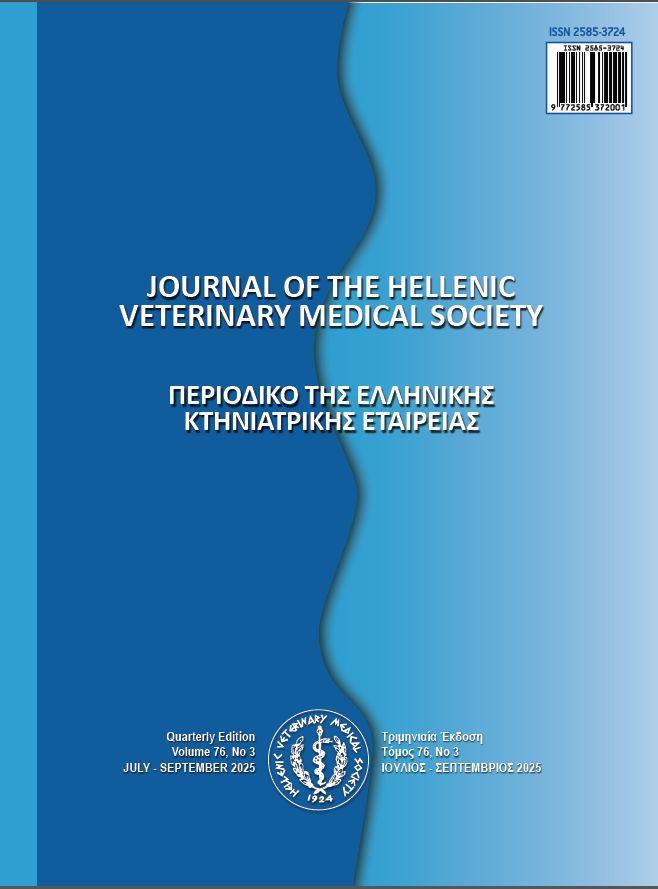Investigation of Bacteriocin and Probiotic Properties of Lactic Acid Bacteria from Pastrami
Περίληψη
The aim of this study was to determine the microbiological quality, LAB profile, phylogenetics of Lactobacillaceae and bacteriocin synthesis potential of pastrami isolates produced in Turkey, Kayseri. The probiotic properties of bacteriocinogen strains were investigated in the second stage of the research. To identify the isolates, MALDI-TOF MS and 16S rRNA sequence analysis methods were used. The bacteriocinogenic properties of the strains were evaluated both phenotypically, using the well diffusion method, and at the gene level, using conventional and RT-PCR. To control the stability of cell-free supernatants of bacteriocinogen strains, tolerance tests for enzyme, temperature and pH were performed. To evaluate the probiotic properties of the strains, we investigated their tolerance to gastric juice and bile salts, susceptibility to antibiotics, and ability to synthesize EPSs. The identification process revealed that the dominant species in pastrami was Latilactobacillus sakei. Based on the analyses performed, it was determined that 15 strains (14.56%) exhibited phenotypic antimicrobial activity against at least one of the selected indicator bacteria. Five strains were found to be positive for at least one of the sakacin P and sakacin Q synthesis genes on molecular analysis, which were confirmed by sequence analysis. Cell-free supernatants of bacteriocinogen strains were found to be tolerant of low pH and different temperature conditions. In conclusion, it has been determined that the Latilactobacillus sakei 2 and Latilactobacillus curvatus 48 strains have significant potential in terms of probiotic and starter culture properties.
Λεπτομέρειες άρθρου
- Πώς να δημιουργήσετε Αναφορές
-
Disli, H., & Gonulalan, Z. (2025). Investigation of Bacteriocin and Probiotic Properties of Lactic Acid Bacteria from Pastrami. Περιοδικό της Ελληνικής Κτηνιατρικής Εταιρείας, 76(3), 9565–9576. https://doi.org/10.12681/jhvms.39177
- Τεύχος
- Τόμ. 76 Αρ. 3 (2025)
- Ενότητα
- Research Articles

Αυτή η εργασία είναι αδειοδοτημένη υπό το CC Αναφορά Δημιουργού – Μη Εμπορική Χρήση 4.0.
Οι συγγραφείς των άρθρων που δημοσιεύονται στο περιοδικό διατηρούν τα δικαιώματα πνευματικής ιδιοκτησίας επί των άρθρων τους, δίνοντας στο περιοδικό το δικαίωμα της πρώτης δημοσίευσης.
Άρθρα που δημοσιεύονται στο περιοδικό διατίθενται με άδεια Creative Commons 4.0 Non Commercial και σύμφωνα με την άδεια μπορούν να χρησιμοποιούνται ελεύθερα, με αναφορά στο/στη συγγραφέα και στην πρώτη δημοσίευση για μη κερδοσκοπικούς σκοπούς.
Οι συγγραφείς μπορούν να καταθέσουν το άρθρο σε ιδρυματικό ή άλλο αποθετήριο ή/και να το δημοσιεύσουν σε άλλη έκδοση, με υποχρεωτική την αναφορά πρώτης δημοσίευσης στο J Hellenic Vet Med Soc
Οι συγγραφείς ενθαρρύνονται να καταθέσουν σε αποθετήριο ή να δημοσιεύσουν την εργασία τους στο διαδίκτυο πριν ή κατά τη διαδικασία υποβολής και αξιολόγησής της.




